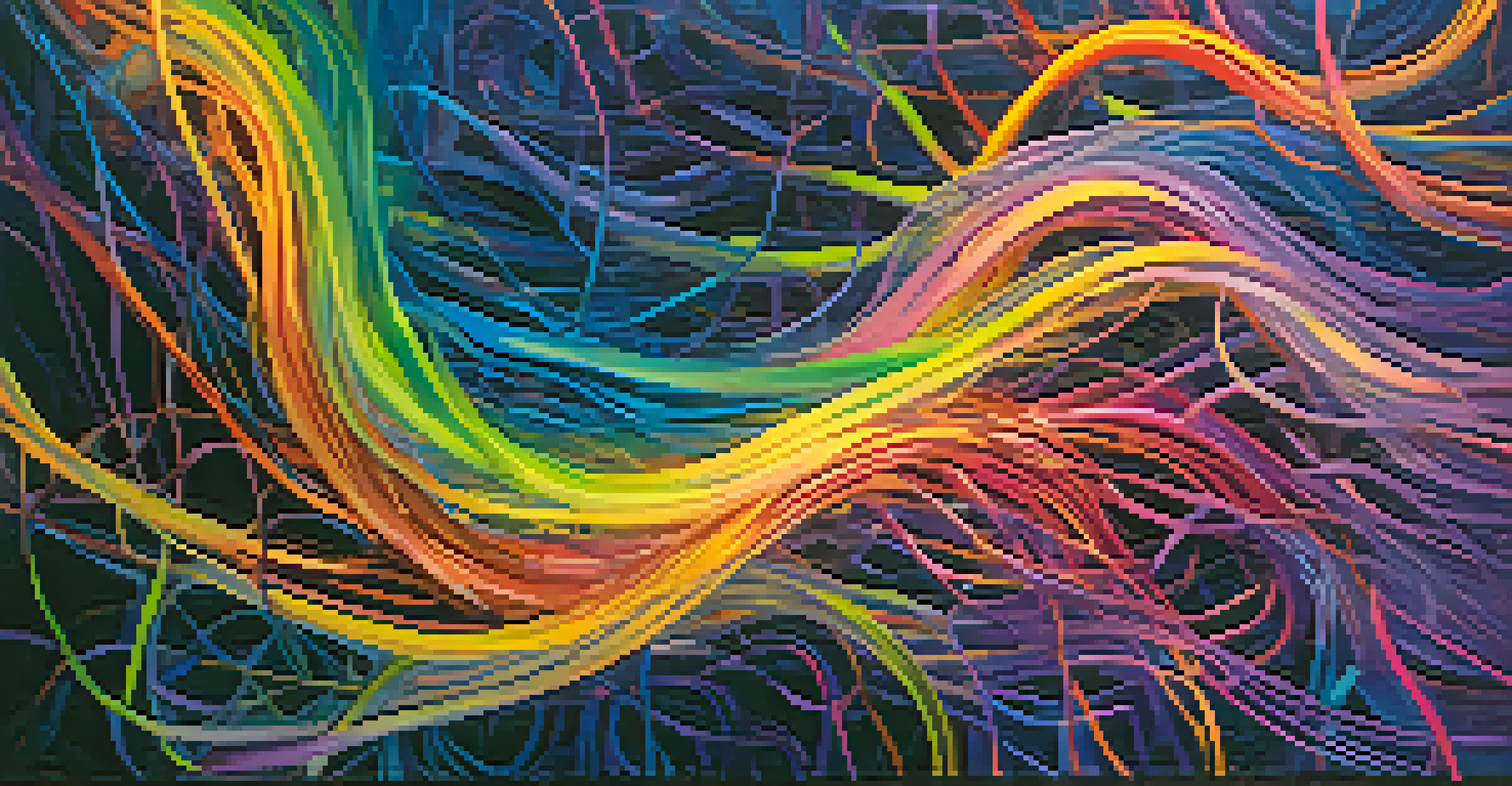Entheogens in Therapy: A Path to Improved Emotional Health

Understanding Entheogens and Their Role in Therapy
Entheogens are substances that can induce altered states of consciousness, often used in spiritual or therapeutic contexts. These natural compounds, like psilocybin and ayahuasca, have gained attention for their potential to facilitate deep emotional healing. By engaging with these substances under professional guidance, individuals may explore their inner selves and address unresolved issues.
The greatest gift of the journey is the opportunity to see the world through a different lens.
The therapeutic use of entheogens is grounded in traditional practices, where they have been utilized for centuries in various cultures. Modern research is catching up, showing promising results in treating conditions such as PTSD, depression, and anxiety. This resurgence highlights a shift in how we perceive mental health interventions, blending ancient wisdom with contemporary science.
As we delve into the specifics of entheogens in therapy, it's essential to understand the set and setting—meaning the mindset of the individual and the environment where the experience occurs. This context significantly influences the effectiveness and safety of the therapeutic process.
The Science Behind Entheogens and Emotional Healing
Recent studies have shown that entheogens can promote neuroplasticity, enabling the brain to form new connections and pathways. This capability is crucial for emotional healing, as it allows individuals to reframe their thoughts and behaviors in a more positive light. For example, psilocybin has been linked to a reduction in depressive symptoms by helping patients process traumatic memories.

Additionally, entheogens can trigger a profound sense of interconnectedness and compassion, which may play a pivotal role in fostering emotional well-being. During therapeutic sessions, individuals often report feelings of unity with others and the universe, breaking down barriers of isolation. This shared experience can be incredibly healing for those struggling with loneliness or grief.
Therapeutic Potential of Entheogens
Entheogens like psilocybin and MDMA are showing promise in treating mental health issues such as PTSD, depression, and anxiety.
Moreover, the emotional release that often accompanies entheogen use can lead to significant breakthroughs. Many participants describe experiencing cathartic moments that allow them to confront and release pent-up emotions, paving the way for a healthier emotional state.
Potential Risks and Ethical Considerations
While entheogens present exciting therapeutic potential, they also come with risks that must be carefully managed. Adverse psychological reactions, such as anxiety or paranoia, can occur, particularly in individuals with a history of mental health issues. Therefore, screening and professional oversight are crucial to ensure safety during these experiences.
Healing is a matter of time, but it is sometimes also a matter of opportunity.
Ethical considerations also arise when discussing the use of entheogens in therapy. As these substances become more mainstream, there’s a responsibility to ensure that they are used safely and respectfully, particularly in cultures where they hold traditional significance. Practitioners must navigate these complexities to honor both the therapeutic potential and cultural heritage of these substances.
Informed consent is another vital aspect of the therapeutic process. Patients should be fully educated about what to expect during their sessions, including potential effects and the importance of integration afterward. This transparency fosters trust and empowers individuals to take an active role in their healing journey.
The Role of Integration in the Therapeutic Process
Integration is a crucial step following the use of entheogens in therapy, as it allows individuals to make sense of their experiences. This phase involves reflecting on insights gained during sessions and applying them to daily life. Without proper integration, the benefits of the experience may fade, and individuals could struggle to implement positive changes.
Therapists often facilitate integration through follow-up sessions, helping clients process their experiences and emotions. This ongoing support can include discussions about feelings, thoughts, and any challenges that arise post-session. By prioritizing integration, individuals can better navigate the transition from insight to action.
Importance of Integration Process
Integration after entheogen sessions is crucial for applying insights gained during therapy to daily life.
Integration also emphasizes the importance of community and connection. Sharing experiences with others who have undergone similar journeys can foster a sense of belonging and support, further enhancing emotional health. Group integration sessions or workshops can provide a safe space for individuals to explore their feelings and insights together.
Real-Life Success Stories of Entheogen Therapy
Many individuals have reported transformative experiences through entheogen therapy, offering hope for those struggling with emotional health issues. For instance, a veteran with PTSD found relief through the use of MDMA in a controlled therapeutic setting, enabling him to process traumatic memories he had long avoided. His story highlights the potential for healing in those who have experienced deep emotional wounds.
Another inspiring example comes from a woman who battled severe depression for years. After participating in a psilocybin therapy trial, she described a profound shift in her perspective, allowing her to reconnect with joy and purpose. Such personal testimonies underscore the power of entheogens when combined with therapy.
These success stories are supported by ongoing research and clinical trials that aim to validate the therapeutic benefits of entheogens. As more individuals share their journeys, the stigma surrounding these substances may continue to diminish, paving the way for broader acceptance in mental health treatment.
The Future of Entheogens in Mental Health Care
As interest in entheogens grows, the future of their use in mental health care looks promising. Researchers are increasingly exploring various compounds and their therapeutic applications, aiming to develop evidence-based practices. This could lead to more widespread acceptance among healthcare providers and patients alike, expanding treatment options for those in need.
Moreover, legislative changes are beginning to reflect this shift, with some regions decriminalizing or even legalizing certain entheogens for therapeutic use. This progress indicates a growing recognition of the potential benefits of these substances, providing more people access to alternative treatment methods. However, continued advocacy for responsible use and research is essential.
Risks and Ethical Considerations
While entheogens hold therapeutic potential, they also come with risks that require careful management and ethical oversight.
Ultimately, the integration of entheogens into mainstream mental health care could revolutionize how we approach emotional health. By combining traditional therapeutic techniques with innovative practices, we can create a more holistic, compassionate framework for supporting individuals on their healing journeys.
Finding Qualified Practitioners for Entheogen Therapy
If you’re considering entheogen therapy, finding a qualified practitioner is crucial to ensure a safe and effective experience. Look for professionals who have received specialized training in this field and are familiar with the substances being used. It's also beneficial to seek out practitioners who prioritize a supportive and non-judgmental environment.
Many therapists who offer entheogen-assisted sessions will provide a thorough intake process, discussing your history and goals to tailor the experience to your needs. This personalized approach is essential for maximizing the benefits while minimizing risks. Don't hesitate to ask questions about their qualifications and therapeutic philosophy.

Additionally, consider seeking recommendations from trusted sources or support groups focused on entheogen therapy. Engaging with a community can provide valuable insights and help you feel more connected throughout your journey. Remember, the right practitioner will empower you and guide you on your path to improved emotional health.